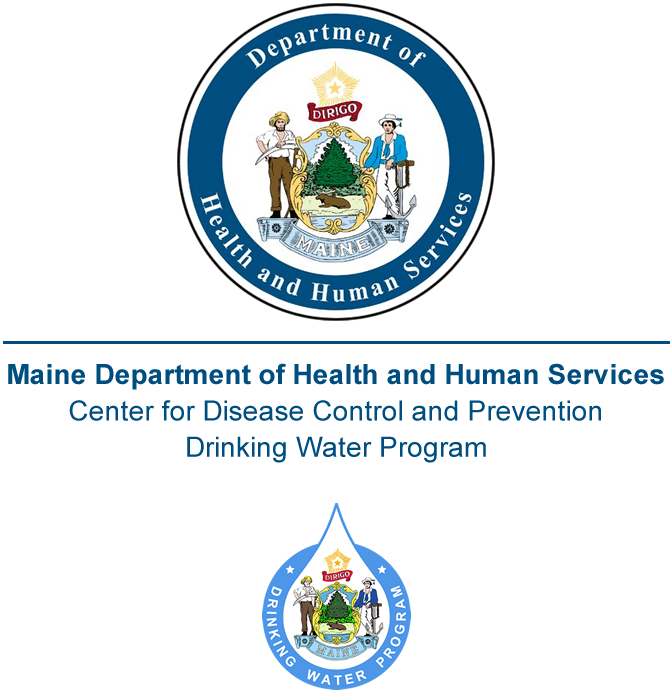Maine DWP Update: PFAS Health Advisories (EPA)
Maine Department of Health & Human Services sent this bulletin at 06/23/2022 10:13 AM EDTThis update is coming to you from the Maine CDC Drinking Water Program.
Having trouble viewing this email? View it as a Web page.
EPA Issues Updated PFAS Health Advisories
Please read the following statement from the Maine CDC concerning PFAS in drinking water, followed by items specific to Public Water Systems:
On June 15, 2022, the U.S. Environmental Protection Agency (EPA) released four drinking water health advisories for per- and polyfluoroalkyl substances (PFAS)*. Health advisory levels for two of the four compounds (PFOA and PFOS) are below measurable levels, so any detections of these compounds above the laboratory method reporting limits would exceed the health advisory levels. EPA health advisory levels for the other two PFAS compounds, known as “GenX” and PFBS, are 10 parts-per-trillion (ppt) and 2,000 ppt, respectively.
EPA's health advisories are not enforceable limits, and the Federal agency does not intend to have an enforceable standard until 2023. Rather, the drinking water health advisories provide information on contaminants that may occur in drinking water and may cause adverse human health effects.
In 2021, Maine became one of only a dozen states to proactively address PFAS in drinking water by establishing in State law an interim drinking water standard for PFAS. The legislation set an interim standard of 20 ppt for a combination of six PFAS compounds (PFOS, PFOA, PFHpA, PFNA, PFDA, PFHxS), with a requirement to develop a final standard by 2024. Our intent is to continue to implement our statutory mandate.
The Maine CDC Drinking Water Program (DWP) will factor this new recommendation into its ongoing work with local utilities. Customers who are concerned about PFAS in their drinking water should contact their local water utility to see whether PFAS monitoring data or specific recommendations for your community are available.
Maine’s legislation (S.P. 64) requires all Community Public Water Systems, and schools and childcare facilities that are public water systems, to sample for PFAS in their finished water by December 31, 2022. Sampling guidance is here. Effective immediately, the DWP will be posting confirmed finished water results that have been submitted and processed on its website.
The DWP will continue to implement its existing PFAS regulations, working with Public Water Systems with confirmed PFAS6 levels above 20 ppt to ensure that they notify their customers, continue to monitor for PFAS on an increased frequency, and implement remedies to reduce PFAS below the interim standard.
The DWP will notify systems with finished water results above the federal health advisories and advise them to take confirmation samples. EPA is recommending that Public Water Systems with concentrations in finished drinking water above the health advisory levels take steps to inform customers, undertake additional sampling to assess the level, scope, and source of contamination, and examine steps to limit exposure. EPA’s information on this topic can be found at www.epa.gov/pfas.
EPA has not promulgated an enforceable Maximum Contaminant Level (MCL) for any PFAS compound to date. MCLs are generally higher than health advisory limits, as MCLs consider existing methods of detection, best available treatment technology, and cost. However, Public Water Systems should prepare for the likelihood that the federal MCLs for PFOS and PFOA will be very low, possibly at the detection level. EPA is expected to propose federal PFAS MCLs in fall 2022, with a final rule expected in fall 2023.
Some relevant information from EPA is attached to this notice, including a Public Water System Fact Sheet, a Community Fact Sheet and an FAQ. These may help you answer customer inquiries and make decisions about potential actions.
If you have PFAS questions, please check our PFAS webpage first, then contact Ashley Hodge at Ashley.Hodge@maine.gov.
Sampling questions can be answered by Maine Rural Water Association at pfasassistance@mainerwa.org.
Questions specific to conditions at individual public water systems should be directed to your Public Water System Inspector.
Questions about PFAS toxicity should be referred to the CDC Environmental and Health Protection Programs at 866-292-3474 or ehu@maine.gov.
Information about available funding to address PFAS contamination can be found here.
* Interim updated Health Advisory for:
- PFOA = 0.004 parts per trillion (ppt);
- PFOS = 0.02 ppt;
- GenX chemicals = 10 ppt;
- PFBS = 2,000 ppt
Attachments
- EPA PFAS 4 HAs FAQ for Web- FINAL.pdf
- EPA PFAS 4 HAs Community Factsheet - FINAL.pdf
- EPA PFAS 4 HAs Water System Factsheet - FINAL.pdf
URLs
-
Maine CDC Drinking Water Program
Home: www.medwp.com
PFAS: www.medwp.com/pws/pfas.shtml
Financial Resources: www.medwp.com/pws/financialResources.shtml#PFAS
- Maine Legislation - SP 64: https://legislature.maine.gov/bills/getPDF.asp?paper=SP0064&item=3&snum=130
- US EPA - PFAS: https://www.epa.gov/pfas

